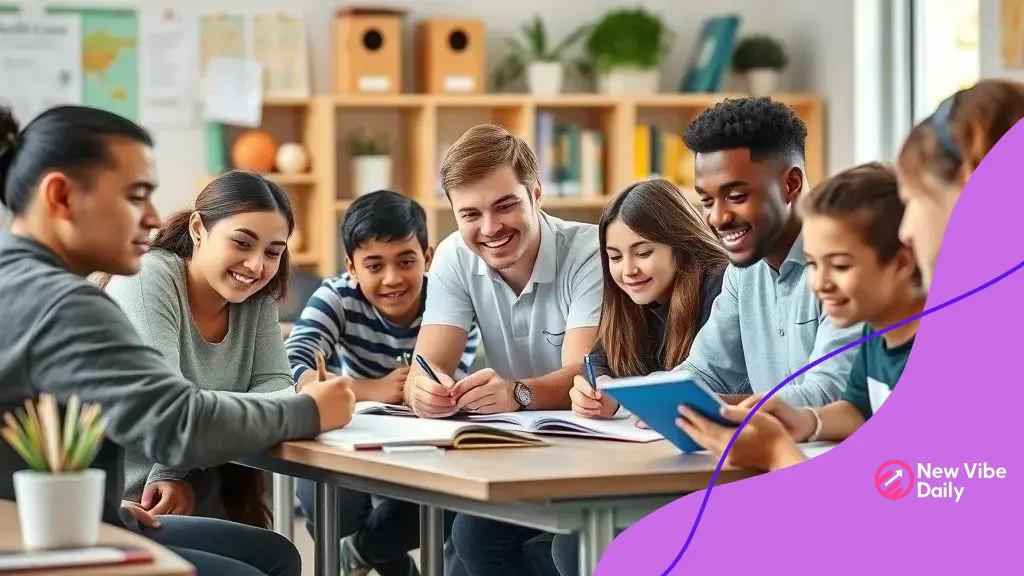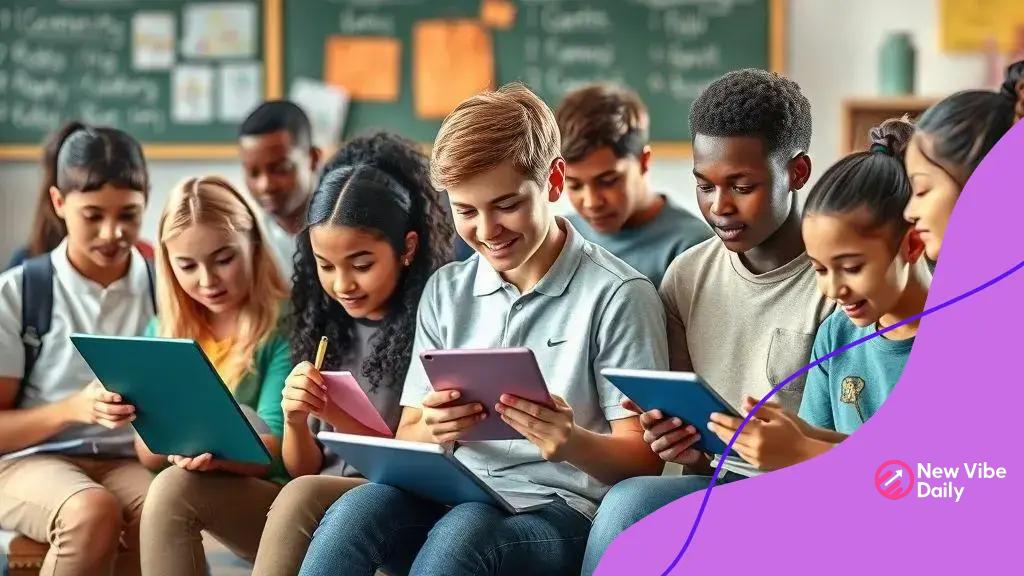Education access: unlocking opportunities for all

Communities can enhance education access by engaging local leaders, building partnerships with businesses, and hosting workshops to inform families about available resources and opportunities.
Education access is a pivotal element in shaping individuals’ futures and fostering community growth. Have you ever wondered how it transforms lives? Let’s dive into this crucial topic and explore its implications.
Understanding education access challenges
Understanding the challenges related to education access is critical for creating effective solutions. Many individuals face barriers that make it difficult for them to access quality education. From financial limitations to geographical constraints, these issues often create significant disparities.
Common Barriers to Education Access
Some of the most prevalent barriers include:
- Cost: Tuition fees and other educational expenses can be prohibitive.
- Location: In remote areas, schools may be few and far between.
- Cultural Factors: Societal norms may discourage certain groups from seeking education.
- Disability: Lack of facilities and resources for individuals with disabilities.
Addressing these barriers is essential. One key aspect is raising awareness in communities. Many people do not realize the resources available to them or understand how to navigate the educational system. For instance, scholarship programs can help mitigate financial barriers.
The Role of Technology
Technology can also play a crucial role in enhancing education access. Online learning platforms have become increasingly popular, making education more accessible. They allow students to learn at their own pace and provide various resources that can cater to individual needs.
Moreover, mobile technology can reach underprivileged areas, connecting students with educators and materials. However, it’s important to ensure that all students have the necessary devices and internet access to benefit from these resources.
Ultimately, improving education access requires a multi-faceted approach. Collaboration between governments, non-profits, and communities is vital in this endeavor. By working together, we can identify the needs of different groups and implement targeted strategies to overcome these obstacles.
Importance of equitable education for all
The importance of equitable education cannot be overstated. Every child has the right to receive a quality education, regardless of their background. Access to education enables individuals to reach their full potential and contributes to the overall development of communities.
Key Benefits of Equitable Education
Equitable education leads to several significant benefits:
- Increased Opportunities: It enables all students to pursue higher education and better job prospects.
- Social Justice: Education can reduce inequalities in society by providing everyone a fair chance.
- Community Development: An educated populace can drive economic growth and innovation.
- Improved Health: Education often correlates with better health outcomes, as educated individuals tend to make informed choices.
Moreover, when education is equitable, it fosters a sense of belonging and acceptance. Students from diverse backgrounds can share their experiences and learn from one another, creating a richer learning environment. This diversity helps prepare students for a globalized world.
Challenges to Achieving Equity
Despite its importance, achieving equitable education presents challenges. Issues such as inadequate funding and systemic biases can obstruct progress. Schools in low-income areas often lack the resources to provide high-quality education. These challenges necessitate a multi-layered approach to ensure that every child has access to the educational opportunities they deserve.
Schools and communities must collaborate to advocate for equitable policies. By raising awareness and supporting educational initiatives, we can work towards a fairer system that benefits everyone.
Innovative solutions to enhance education access

Innovative solutions are crucial in enhancing education access for students worldwide. These approaches not only address existing barriers but also provide new opportunities for learning.
Leveraging Technology
One significant way to improve education access is through technology.
- Online Learning Platforms: They allow students to attend classes from anywhere, breaking geographical barriers.
- Mobile Apps: Educational apps can help students learn in a fun and engaging way, available on their smartphones.
- Virtual Reality: VR technologies can create immersive learning experiences, especially for remote areas.
By harnessing these tools, educators can reach more students effectively, tailoring content to their specific needs.
Community Involvement
Another key strategy is involving local communities. When parents and community members participate in educational initiatives, it can significantly boost access. Local organizations can provide tutoring and mentorship programs, ensuring students have support outside of normal school hours. By working together, communities can create programs that address the unique needs of their students.
Moreover, partnerships with businesses can provide resources and funding for schools in need. For example, companies might offer internships or scholarships, creating pathways for students to gain practical experience.
It’s also vital to advocate for policies that prioritize education access. By participating in discussions with local leaders, communities can push for necessary changes in funding and resources.
Ultimately, the combination of technology and community involvement presents a powerful solution for enhancing education access. These innovative approaches promise to open doors for countless students, paving the way for a brighter future.
Role of technology in education access
The role of technology in improving education access is becoming increasingly important. With the rise of digital tools, education is transforming in ways we never imagined. Technology helps bridge gaps, making learning more accessible to everyone.
Enhancing Learning Opportunities
One major benefit of technology is that it opens up learning opportunities for students in various locations.
- Online Courses: Students can enroll in courses offered by prestigious institutions from anywhere in the world.
- Interactive Resources: Websites and apps provide interactive learning materials that engage students.
- Distance Learning: Remote education allows students in rural areas to access the same quality of teaching as those in urban centers.
This accessibility can make a significant difference in a child’s education, especially in underserved communities.
Tools Supporting Educators
Technology also supports educators by offering tools that streamline their teaching. For instance, learning management systems enable teachers to organize and share materials efficiently. These systems allow for:
- Real-time Feedback: Educators can provide instant feedback on assignments.
- Data Tracking: Teachers can monitor student progress and adjust lessons accordingly.
- Collaboration: Tools like forums and chat systems foster communication and collaboration among students.
Such resources empower teachers to create more personalized learning experiences.
Furthermore, the integration of technology in the classroom allows for a more dynamic learning environment. Students can engage with multimedia content and collaborate on projects easily. This engagement can lead to improved enthusiasm for learning.
As we continue to explore the potential of technology, it is essential to ensure that all students have access to the tools they need. Bridging the digital divide is necessary to make sure that every child can benefit from these innovations.
How communities can advocate for better access
Communities play a vital role in advocating for better education access. Through collective action, they can address barriers that prevent students from receiving a quality education. Taking steps to increase awareness and involvement can lead to significant improvements.
Engaging Local Leaders
One effective way for communities to advocate is by engaging local leaders. By sharing concerns about education access, community members can encourage leaders to prioritize this issue. This engagement can take many forms, such as:
- Meetings: Organizing forums where community members can discuss education challenges directly with leaders.
- Petitions: Collecting signatures to demonstrate community support for educational initiatives.
- Collaborative Events: Hosting events that bring attention to local educational needs.
These actions help create a dialogue between the community and decision-makers, paving the way for positive changes.
Building Partnerships
Another way communities can foster advocacy is by building partnerships with local businesses and organizations. Collaborations can amplify efforts and resources dedicated to improving education access. Businesses can support schools through:
- Mentorship Programs: Employee involvement in mentoring students can provide guidance and encouragement.
- Resource Donations: Offering supplies, technology, or funding can help schools meet their needs.
- Internship Opportunities: Creating pathways for students to gain real-world experience while learning.
Partnerships can make educational programs more robust and provide students with practical learning experiences.
Engaging in outreach efforts is essential for raising awareness about the importance of education access. Communities can host workshops to educate families about available resources and opportunities. These workshops can focus on financial aid, scholarship programs, and academic support services. By equipping families with knowledge, communities empower them to advocate for their children’s education.
Ultimately, through collaboration, engagement, and outreach, communities can effectively advocate for improved access to education, ensuring that every child has the opportunity to succeed.
FAQ – Questions about Community Advocacy for Education Access
What is the role of community engagement in education access?
Community engagement is vital as it brings people together to advocate for better educational resources and opportunities.
How can local leaders help improve education access?
Local leaders can prioritize educational issues by listening to community concerns and promoting relevant policies.
What are some ways businesses can support local schools?
Businesses can offer resources, mentorship programs, and internship opportunities to enhance the educational experience.
How can workshops aid families in navigating education resources?
Workshops provide families with crucial information about scholarships, programs, and services that enhance educational access.






